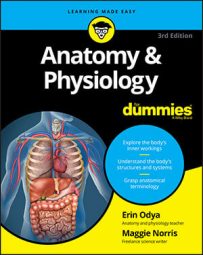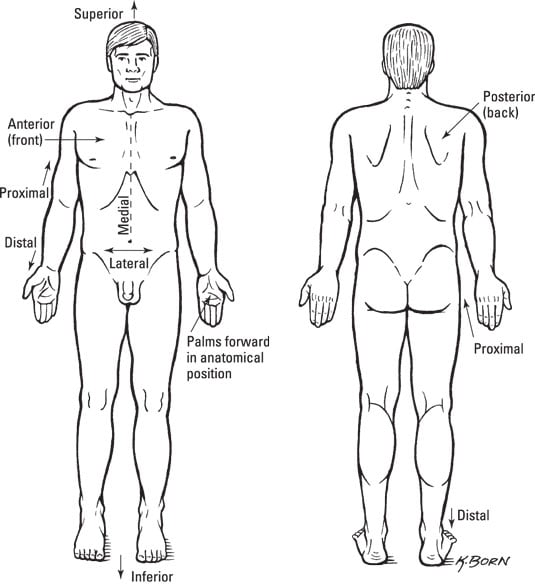Unless you are told otherwise, any reference to location (diagram or description) in the study of anatomy assumes this position. Using anatomical position as the standard removes confusion.
The following list of common anatomical descriptive terms (direction words) may come in handy:
- Right: Toward the patient's right
- Left: Toward the patient's left
- Anterior/ventral: Front, or toward the front of the body
- Posterior/dorsal: Back, or toward the back of the body
- Medial: Toward the middle of the body
- Lateral: On the side or toward the side of the body
- Proximal: Nearer to the point of attachment or the trunk of the body
- Distal: Farther from the point of attachment or the trunk of the body (think "distance")
- Superficial: Nearer to the surface of the body
- Deep: Farther from the surface of the body
- Superior: Above or higher than another part
- Inferior: Below or lower than another part
Notice that this list of terms is actually a series of pairs. Learning them as pairs is more effective and useful.


